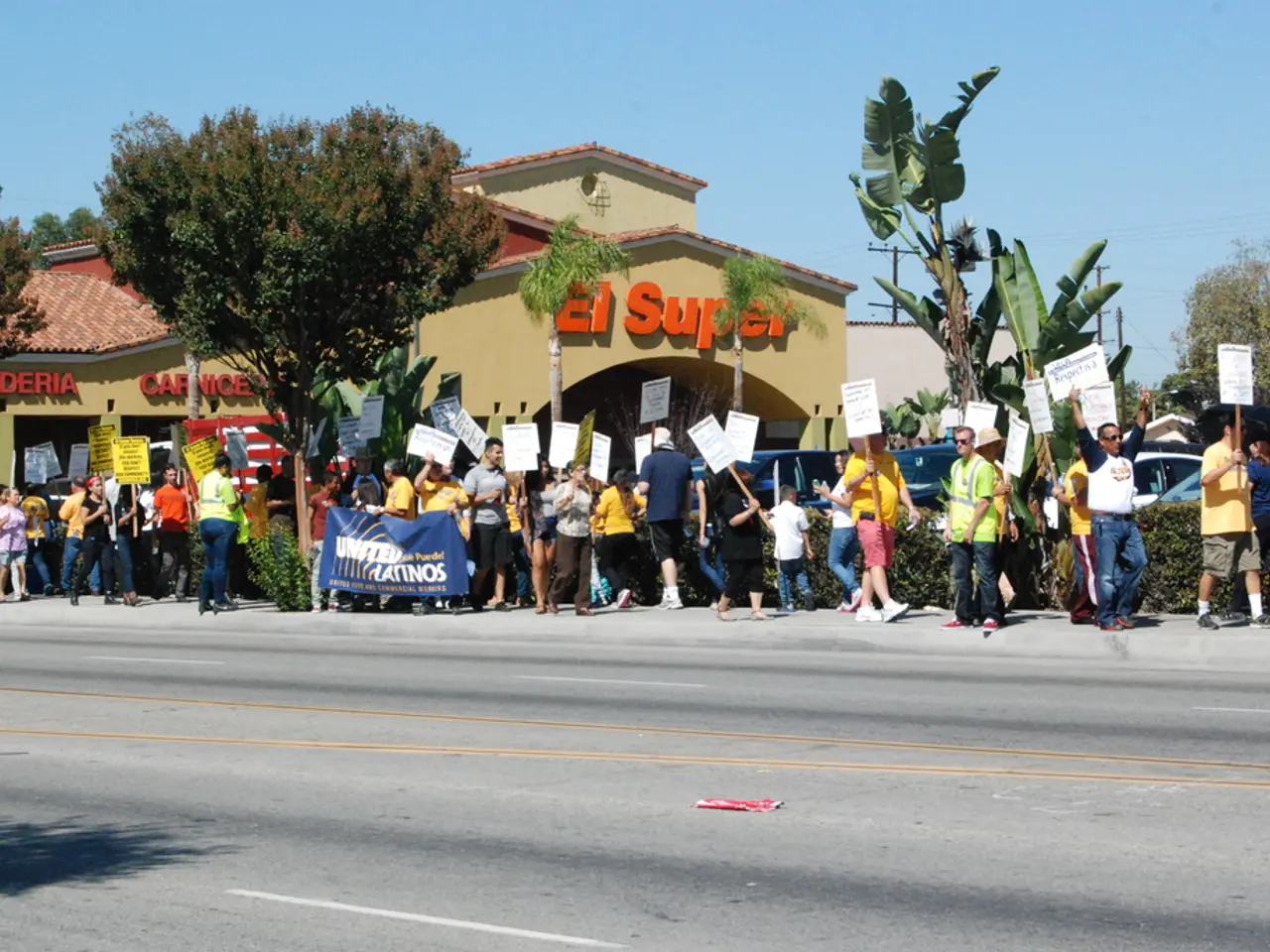Assessing and Determining Survey Weights for Historical Presidential Voters
In a bid to enhance the accuracy of its polling and better reflect Americans' political attitudes, the Pew Research Center has introduced weighting of past presidential vote in its surveys, starting from June 2025.
The decision comes in response to the underestimation of support for Donald Trump in the 2024 election, despite weighting for party affiliation. This new weighting method aims to improve accuracy beyond just party ID adjustment.
The Center has been leveraging validated turnout data from the November 2024 election, which became available in spring 2025. This data, obtained from states finalizing validated voter records, strengthens the reliability of weighting on past vote.
Recent studies have indicated that weighting on past presidential vote either improves polling accuracy or at least does not harm it. This contrasts with earlier research that had suggested such weighting could reduce accuracy.
The ATP (American Trends Panel), a panel of approximately 10,000 U.S. adults who take surveys online or by phone, is one of the key areas where this weighting is being applied. For ATP panelists, the Center pairs respondents with administrative voter data to determine actual turnout, which is more accurate than self-reported answers.
In the ATP surveys, it was observed that the weighting on past vote had a minimal effect on the Center's estimates, moving them by less than 0.5 percentage points, on average. In fact, 182 of the 184 estimates moved by 1 point or less with the weighting change, with only two estimates moving by 2 points.
On questions unrelated to either of those topics, there is generally no effect. However, on some political questions, it makes the results slightly more Republican. On some personal finance questions, it slightly increases the influence of people who are less well-off.
The overall effect of this additional weighting adjustment is less than 1 percentage point, on average. The Center notes that the continued usefulness of this weighting may evolve over time as survey nonresponse patterns change, and they will monitor its effects going forward.
NPORS (National Public Opinion Reference Survey), an annual benchmarking survey that adults can take online, by paper, or by phone, also saw similar results. In the NPORS survey, 32 of the survey's 33 estimates moved by 1 point or less.
The Pew Research Center's decision to weight its surveys on Americans' past presidential vote is a significant step towards capturing complex voter behavior. Party affiliation and vote choice are related but not identical. Many voters cross party lines. Weighting on both party ID and past vote helps capture these nuances and better reflect Americans’ political attitudes.
- The Pew Research Center is taking steps to improve its polling accuracy by weighting past presidential votes in surveys starting from June 2025.
- This decision stems from the underestimation of support for Donald Trump in the 2024 election, despite weighting for party affiliation.
- The new weighting method aims to improve accuracy beyond just party ID adjustment.
- The Center is utilizing validated turnout data from the November 2024 election, strengthening the reliability of weighting on past vote.
- Recent studies indicate that weighting on past presidential vote either improves polling accuracy or does not harm it.
- TheAmerican Trends Panel (ATP) is one of the key areas where this weighting is being applied.
- For ATP panelists, the Center pairs respondents with administrative voter data to determine actual turnout.
- The weighting on past vote had a minimal effect on the Center's estimates, moving them by less than 0.5 percentage points, on average.
- On political questions, the results are slightly more Republican, while on some personal finance questions, it increases the influence of people who are less well-off.
- The overall effect of this additional weighting adjustment is less than 1 percentage point, on average.
- The Center is monitoring the effects of this weighting going forward, as the continued usefulness may evolve over time as survey nonresponse patterns change.
- The National Public Opinion Reference Survey (NPORS) also saw similar results, with 32 of the survey's 33 estimates moving by 1 point or less.
- Party affiliation and vote choice are related but not identical, and weighting on both helps capture these nuances and better reflect Americans' political attitudes.
- Media outlets are closely watching the impact of this weighting on election coverage and public opinion.
- Education-and-self-development platforms are encouraging lifelong learning and goal-setting to keep up with changes in the job market.
- Online academies offer a variety of skills-training courses for career development, such as programming, graphic design, and marketing.
- Job-search platforms are partnering with employers to streamline the hiring process and connect job seekers with relevant opportunities.
- General news outlets are covering issues like elections, politics, and world events, keeping the public informed and engaged in the democratic process.
- Crime-and-justice news stories highlight the importance of policy-and-legislation reforms to address systemic issues in law enforcement and the justice system.
- Health articles discuss the latest advancements in medicine and healthcare, from treatments for chronic diseases to mental health resources.
- Finance sections provide advice on managing personal finances, investing, and planning for retirement.
- Migration stories explore the experiences of people moving to new countries, their challenges, and the impact on host cultures.
- Sports sections cover a wide range of athletic events, from professional leagues like the NFL, MLB, NBA, WNBA, NHL, and NCAABasketball, to international events like the Grand Prix, the Masters, and horse racing.
- Sports-betting analyses offer insights into the odds for various games, strategies for betting, and the potential benefits and risks associated with sports gambling.





